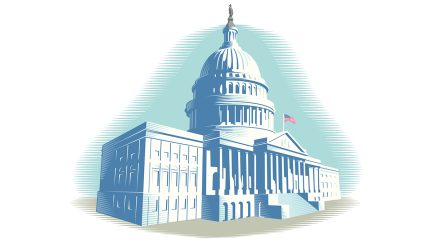Never miss a story — sign up for PLANADVISER newsletters to keep up on the latest retirement plan adviser news.
Participants Have Plan Distribution Options During Hurricane Season
With tropical storm season causing extensive damage, it’s a good time to ensure plan participants know they can take out special disaster distributions.
Tropical Storm Debby brought heavy rain, flooding and tornado warnings to hundreds of miles of the eastern U.S. last week, and as of Wednesday, Hurricane Ernesto has formed in the Atlantic.
On August 9, the IRS announced it will provide tax relief for individuals and businesses in four states affected by Hurricane Debby: South Carolina, North Carolina, Florida and Georgia. Taxpayers in these states now have until February 3, 2025, to file various federal individual and business tax returns and make tax payments. More information on extended tax deadlines can be found on the IRS website.
As intense storms are becoming more frequent due to climate change, it is more important than ever for participants to be aware of their distribution options during emergency situations.
Qualifying via FEMA Declaration
Before the SECURE 2.0 Act of 2022, a plan could only allow participants to take a hardship withdrawal without being subject to a 10% tax penalty if Congress enacted a special law for the specific disaster.
Allison Itami, a partner in Lathrop GPM LLP, says plan sponsors can now provide distribution and loan relief in response to a qualified disaster declared by the Federal Emergency Management Agency.
“Connecting this to a FEMA declaration is going to be a lot smoother,” says Itami. “The delay in knowing whether or not it can be a disaster for hardship purposes is going to hopefully be a lot [shorter.]”
Tropical Storm Debby was declared a disaster by FEMA on August 6.
For 401(k), 403(b), 457(b) and profit-sharing plans, the maximum amount of distribution that a participant can take from the plan in the event of a qualified disaster is $22,000. Covered distributions, which will not be subjected to the 10% tax penalty, are those made on or after the first day of an incident period and within 180 days from the date of the disaster declaration.
According to Itami, while plans are not required to offer qualified disaster distributions, a participant can still take an in-service withdrawal; fill out on their tax forms that they used the distribution for a qualified disaster; and they will not be subject to the 10% penalty. However, Itami says if a plan decides to go ahead and make an amendment to its plan documents to offer these special hardship provisions, the permitted dollar amounts are higher than normal.
In addition, if a participant takes a distribution of $10,000, for example, they do not have to pay income taxes on the full amount in the year they take it, but can instead repay all or part of the distribution over the course of three years.
The repayment is treated as a rollover. A plan is not required to allow repayment of the disaster distribution if it does not accept other rollovers, according to the IRS. Rollovers to IRAs are an alternative way for the participant to avoid taxation, as well.
“A plan sponsor sort of treats [the repayment] as if they were roll-in contribution,” says Itami. “Hopefully that gets the person the immediate financial relief that they need, but also encourages them to get back on track with their retirement savings.”
Emergency Options May Not Be Active Yet
Ben Grosz, a tax and ERISA attorney at Ivins, Philips & Barker, adds that even though the special disaster distributions could be legally added to plans after Congress passed SECURE 2.0 in December 2022, recordkeepers were slow to make this plan design option available. As a result, Grosz says it has taken plan sponsors more than a year before they have been able to offer the provision in their plans.
Grosz says Fidelity is one example of a recordkeeper that has rolled the provision out in recent months and made it available for plans with which it works. Spencer Walters, a partner in Ivins, Philips & Barker, says if a plan sponsor wants to add this provision, it needs to find out what its recordkeeper is able to provide, as some have rolled it out and other are still in the process of doing so.
Walters says plan sponsors also should consider the fact that adding the special distribution provision is likely going to be permanent.
“If you do add [the provision], the IRS hasn’t said you can take it away,” says Walters. “Ordinarily, when you add a distribution like this to your plan, it’s there forever. … So as an employer, you have to plan for that accordingly, [as] it would become a protected benefit for participants that you wouldn’t be able to take away.”
Additionally, Walters says employers may want to update their communications and summary plan descriptions for participants to add language specifying the availability of this provision.
“Even if you’re not offering it, your participants would want to know that they, individually, could get the tax benefit of this type of provision,” Walters says.
Walters says the new disaster relief distribution and loan rules under SECURE 2.0 are meant to provide more simplicity and flexibility to participants who need to tap into their retirement savings.
“I think this is part of a broader trend of getting the balance right for 401(k) plans so that people are encouraged to contribute … to their retirement savings, knowing that if an emergency arises and they need access to the money, they can get access [to it],” he says. “In the past, that’s been a difficult thing for policymakers to balance, but this is a little bit more reassuring to participants.”
You Might Also Like:

403(b) Plans Have Special Considerations When Complying with SECURE 2.0

Answering Questions About SECURE 2.0 Catch-Up Provisions





